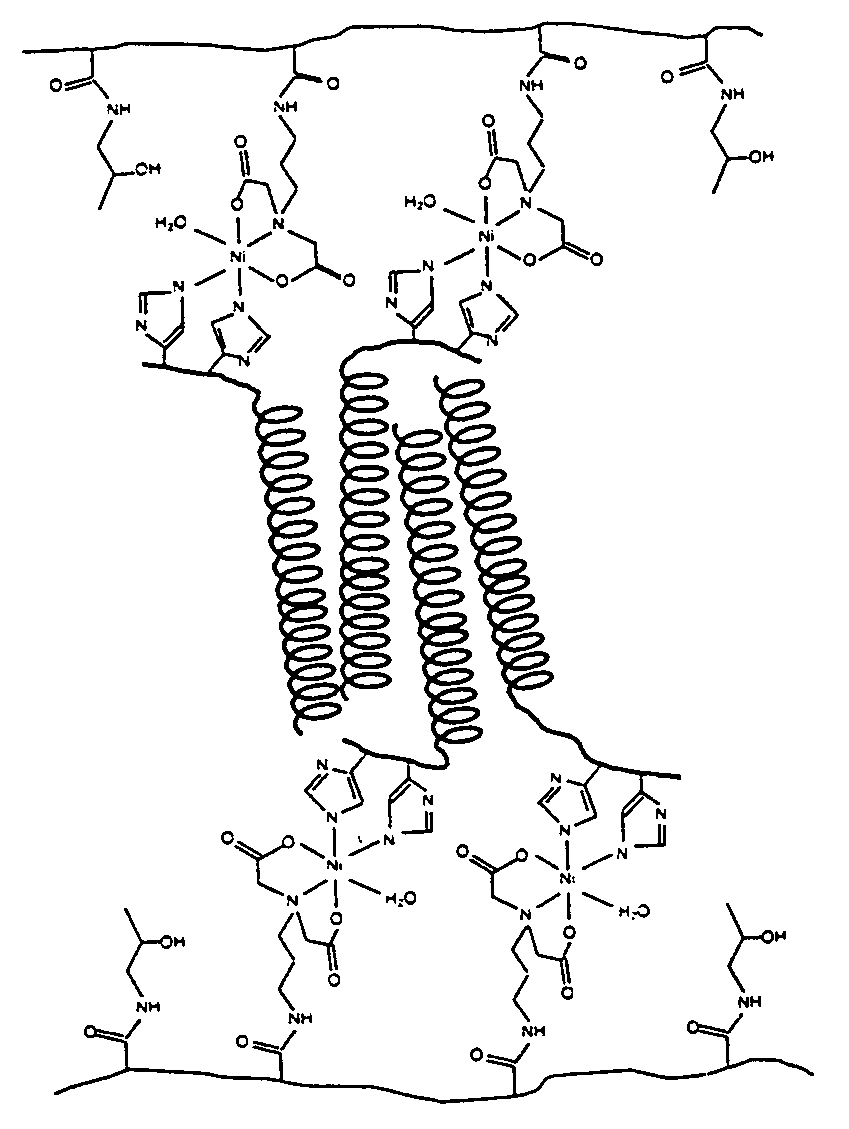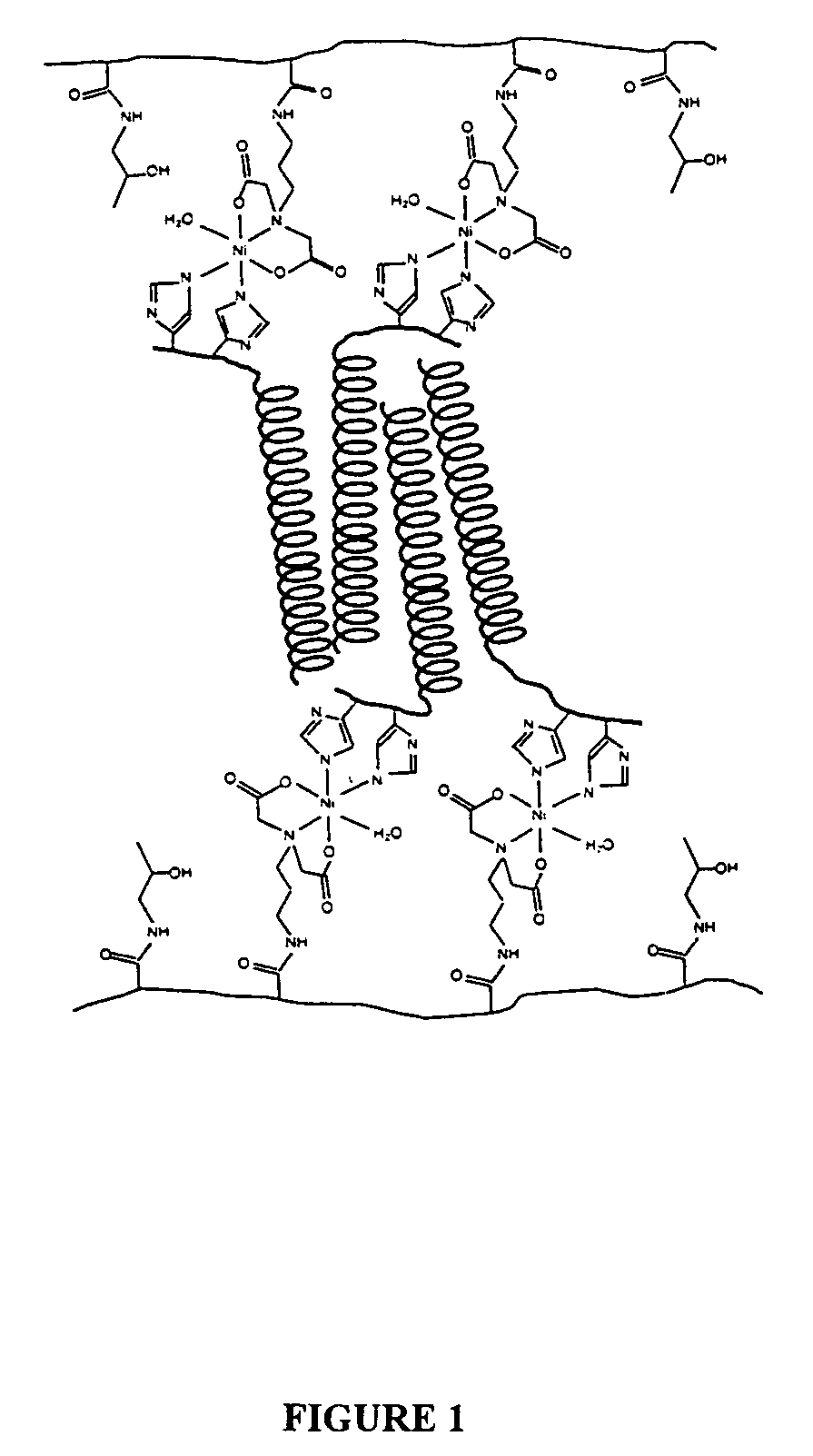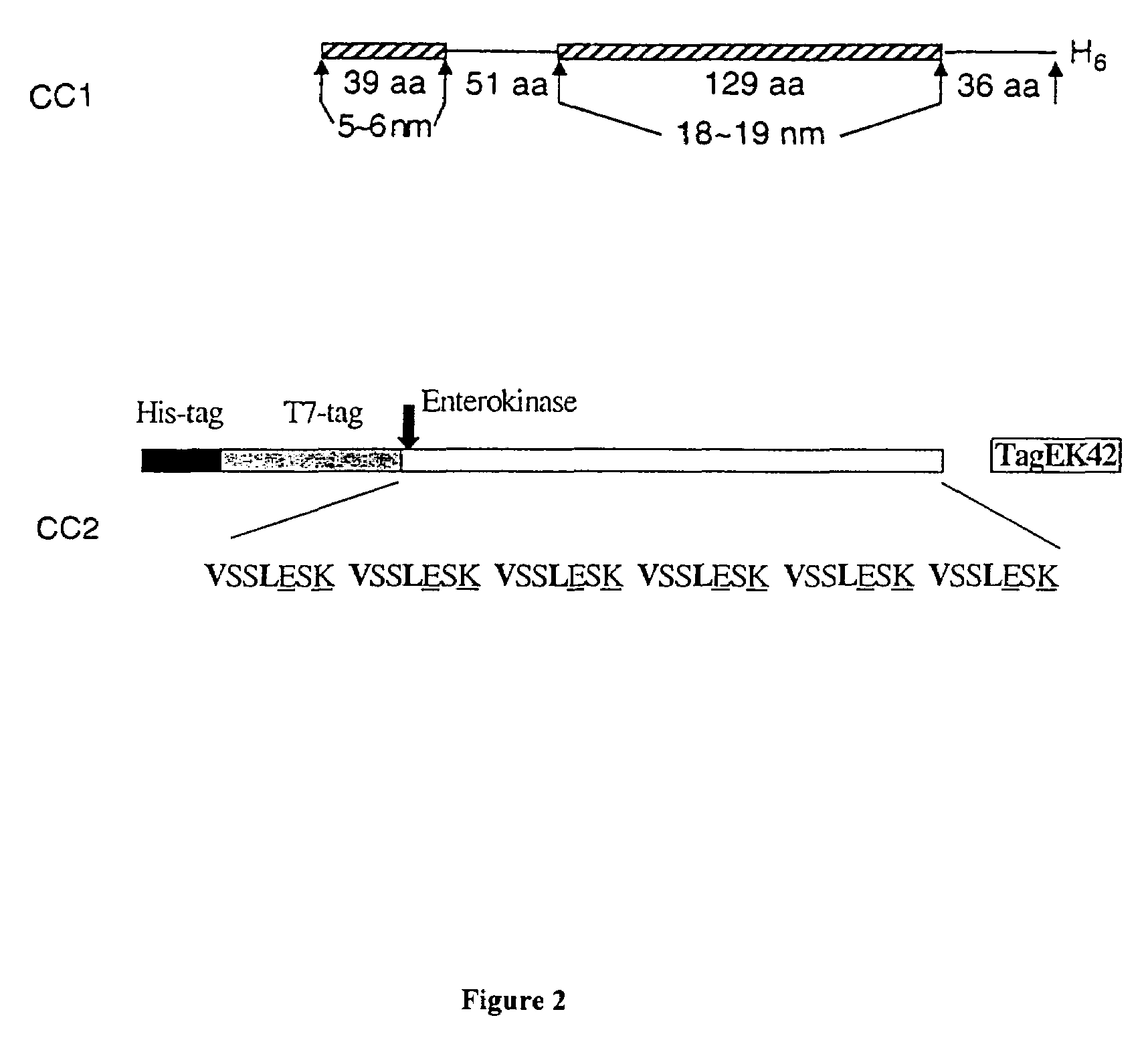Hydrogels of water soluble polymers crosslinked by protein domains
- Summary
- Abstract
- Description
- Claims
- Application Information
AI Technical Summary
Benefits of technology
Problems solved by technology
Method used
Image
Examples
example 1
Construction of Plasmids
[0048]All the enzymatic reactions involved in plasmid construction were performed at conditions recommended by the manufacturer of the enzymes used. DNA manipulation was carried out based upon the standard protocols. Kanamycin resistant plasmid pRSETB was generated by the following procedure. The kanr gene in plasmid pACYC was obtained by digestion with BamHI / XbaI, blunted with Klenow fragments, and ligated into the ScaI site of pRSETB-ampr resulting in pRSET-kanr. Coexpression plasmid pMON-kanr was constructed by known procedures.
[0049]FIG. 2 shows DNA sequences encoding coiled-coil domains CC1 and CC2, were designed and flanked by restriction sites used for cloning. This double-stranded DNA was dissected into six single-stranded oligonucleotides, and was synthesized on an automated DNA synthesizer using conventional solid-phase phosphoramidite chemistry. Crude products were dissolved in sterile deionized water and used for cloning without further purificati...
example 2
Protein Expression and Purification
[0051]Co-expression vector pRSETB-kanr-EE42-KK42 was constructed as follows:
[0052]The recombinant plasmids were used to transform E. coli BL21 (DE3)pLysS cells. The cells were grown in LB medium containing 50 mg / ml Kanamycin and 34 mg / ml chloramphenicol at 37° C. until A600 reached 0.6˜1. In particular, pMON-kanr-EE42 and pRSETB-ampr-KK42 were used to co-transform host cells, and selected in the presence of the same concentrations of Kanamycin and chloramphenicol plus 50 mg / ml ampicillin. Expression of the target proteins were induced by adding isopropyl β-thiogalactoside to 0.6 mM final concentration followed by incubation for another five hours at 37° C. before cells were harvested. TagEK42 and EE42::KK42 mixtures were purified from the soluble portion of the cell lysate using Ni-NTA immobilized metal affinity resin under native conditions. The target proteins were eluted by 20 mM Tris containing 250 mM imidazole and 500 mM sodium chloride. Elute...
example 3
Synthesis of HPMA, DAMA, and MANTA
[0056]HPMA was synthesized as described by Strohalm et al., 70 Macromol. Chem., 109–118 (1978). DAMA was synthesized as follows: Bromoacetic acid (14 mmole, 2.0 g) was dissolved in 1 N sodium hydroxide with tiny amount of inhibitor, and cooled to 0˜5° C. N-(3-aminopropyl)methacrylamide hydrochloride (7 mmole, 1.25 g) was dissolved in deionized water. Following adjusting pH to 7˜9 by 1 N sodium hydroxide, it was added drop-wise into bromoacetic acid solution within 20 min under sufficient stirring. With slight delay, sodium hydroxide (aqueous, 1 N, 14 ml) was also added drop-wise. The reaction was allowed to progress at 0° C. for 2 hrs, and at room temperature for 48 hrs. Under stirring and cooling and the presence of inhibitor the reaction mixture was acidified by adding 1 M hydrochloric acid. Water was removed by evaporation in vacuo using water-bath whose temperature should not exceed 50° C. The residual solid was extracted twice with ethanol (anh...
PUM
| Property | Measurement | Unit |
|---|---|---|
| Fraction | aaaaa | aaaaa |
| Fraction | aaaaa | aaaaa |
| Fraction | aaaaa | aaaaa |
Abstract
Description
Claims
Application Information
 Login to View More
Login to View More - R&D
- Intellectual Property
- Life Sciences
- Materials
- Tech Scout
- Unparalleled Data Quality
- Higher Quality Content
- 60% Fewer Hallucinations
Browse by: Latest US Patents, China's latest patents, Technical Efficacy Thesaurus, Application Domain, Technology Topic, Popular Technical Reports.
© 2025 PatSnap. All rights reserved.Legal|Privacy policy|Modern Slavery Act Transparency Statement|Sitemap|About US| Contact US: help@patsnap.com



